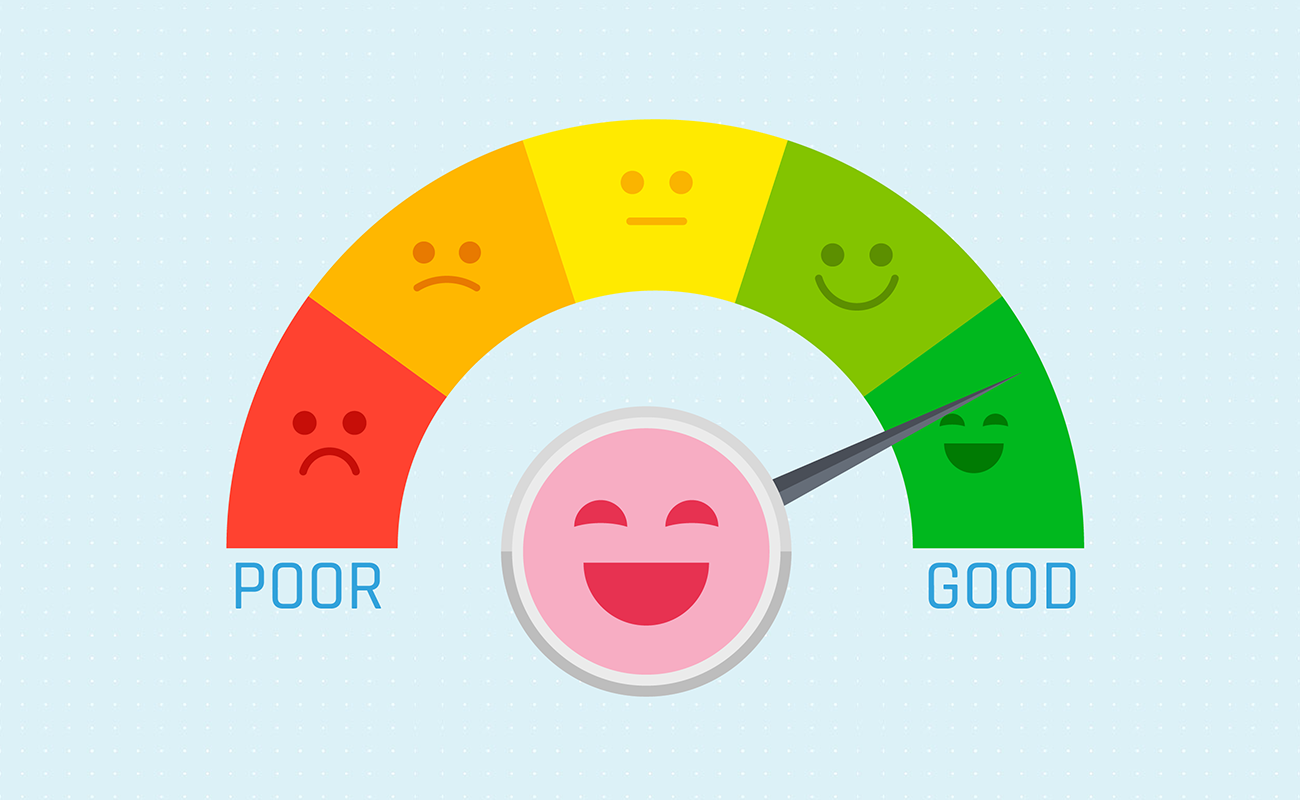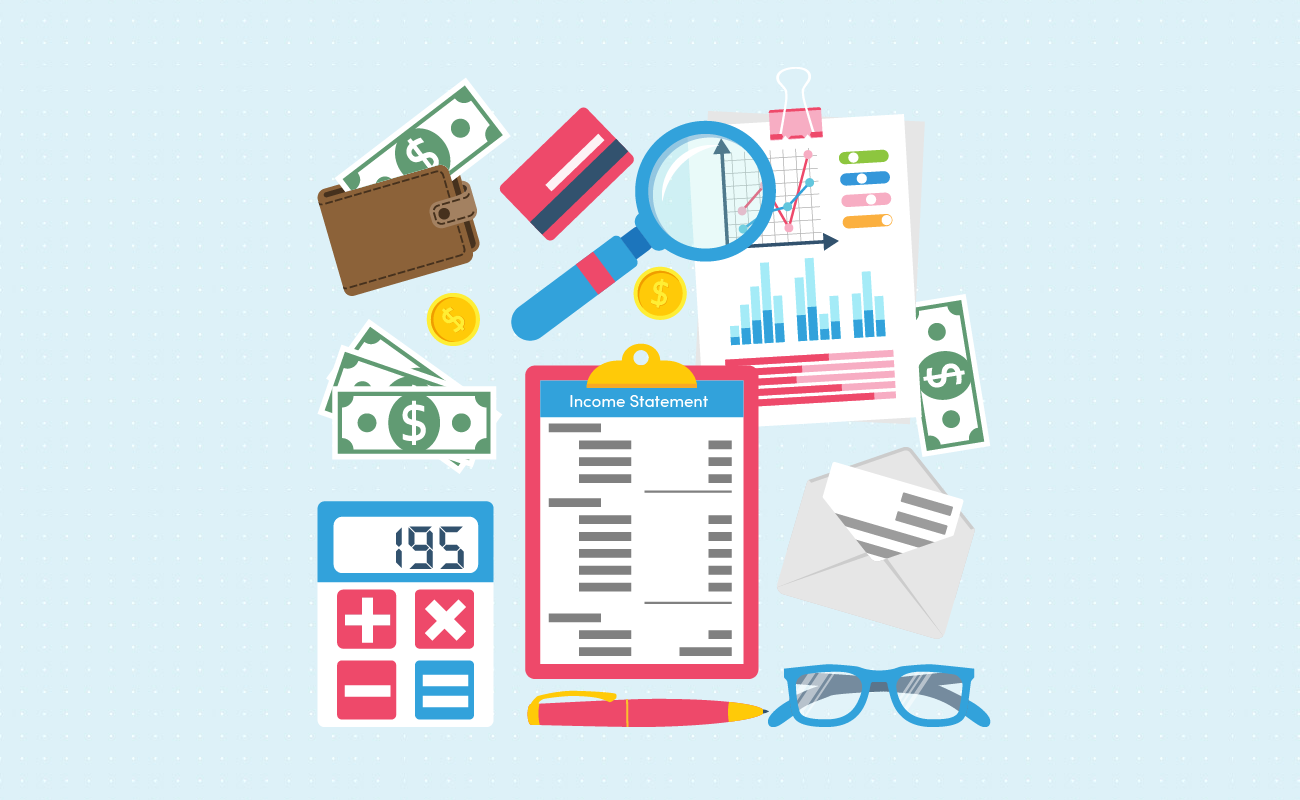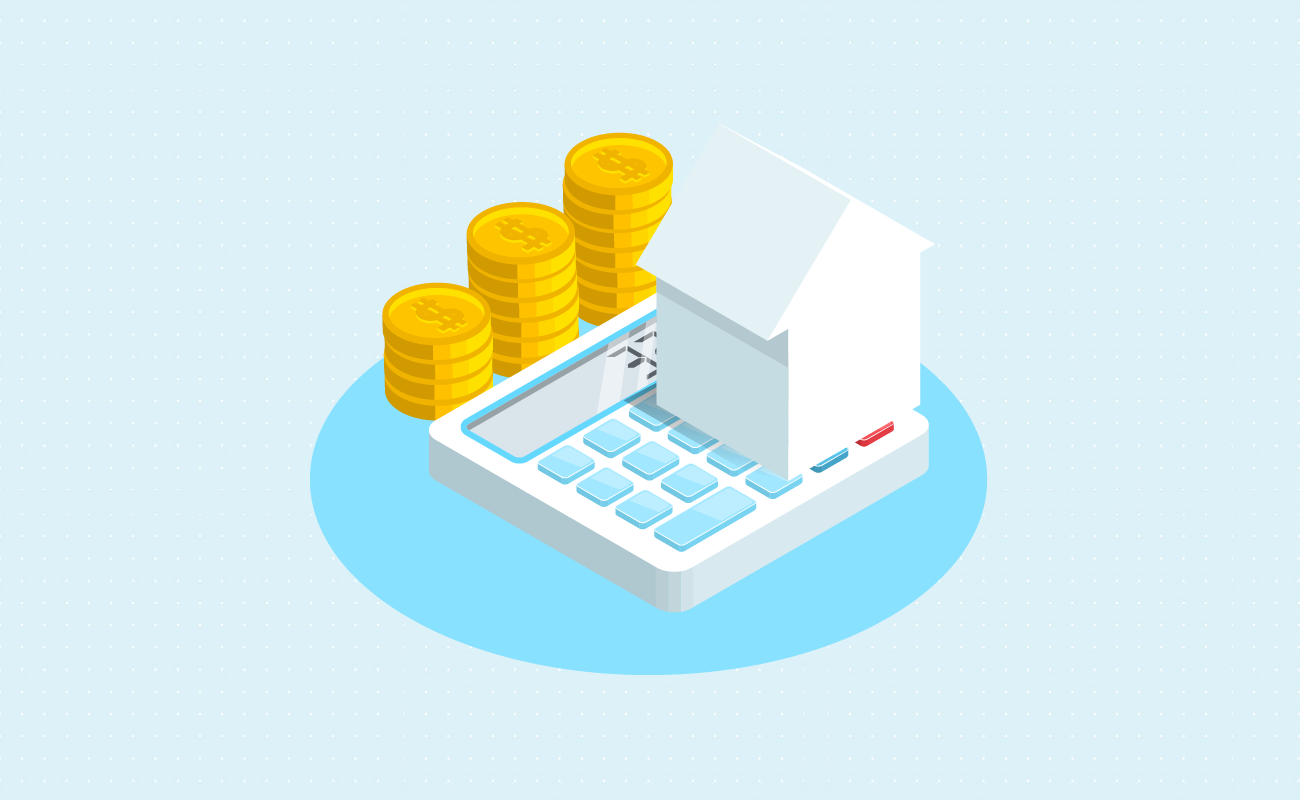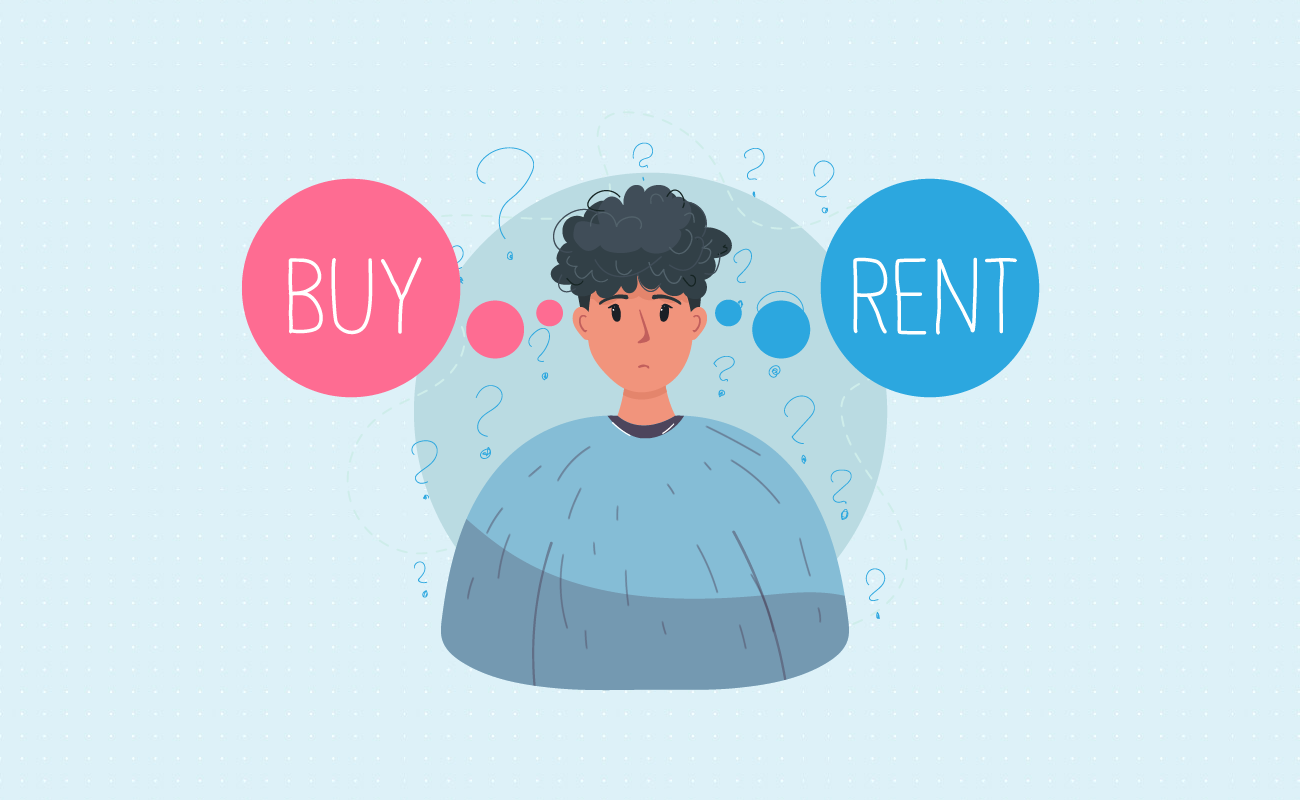Fixed Rates
30 yr
25 yr
20 yr
15 yr
10 yr
Compare Terms
Compare Rates
Real APR
Adjustable Rates
Qualification
Affordability
Renter Affordability
Rent vs Buy
Price per Square Foot
Jumbo
Home Sellers
 Home Mortgage Qualifier Calculator
Home Mortgage Qualifier CalculatorUse this calculator to determine how much house you can afford to buy and what size mortgage you are likely to qualify for given specific debt to income ratios. This calculator is for US homebuyers. We also offer a Canadian mortgage qualifier.
Guide published by Jose Abuyuan on October 27, 2020

The path to homeownership takes dedication and financial stability. For many of us, purchasing a house is one of the biggest expenses we’ll ever make. And to be able to afford a home, most consumers rely on loans which can take decades to pay down.
To secure a mortgage, you should satisfy qualifications such as a good credit score required by lenders. It also involves a lot of documentation, from checking your income and assets, all the way to reviewing your credit and employment history. These standards ensure you’ll be able to pay back your loan. But before anything else, it’s imperative to know if you’re eligible for a mortgage. And more importantly, how much money you can borrow.
Our guide will discuss the mortgage application process, such as pre-qualification and pre-approval. We’ll detail the requirements and how each process benefits homebuyers. Then, we’ll rundown major factors that determine your mortgage eligibility. We’ll also discuss the CFPB’s proposed mortgage qualification changes in 2020, which encourages access to more affordable home financing for consumers. Finally, we’ll use our calculator above to show you how to estimate your maximum qualifying loan amount.
Homebuyers typically go through two important mortgage application steps to secure a loan. If you’ve spoken to a real estate agent, you were likely told to pre-qualify or get pre-approval for a mortgage. Though these steps might seem similar, buyers should understand what sets them apart.
Basically, pre-qualification gives you an idea how much money you can borrow when you apply for a mortgage. It also shows a general picture of your creditworthiness, telling you which financial aspects you should actively improve. It’s a good indicator of whether you’re eligible for a loan.
The second step is pre-approval, which is a conditional commitment from a lender to formally grant you a mortgage. Note that a pre-approval letter is not the same as securing an actual mortgage. It just states exactly how much a lender is willing to lend you. Pre-approval helps you shop for a house so you can make offers, letting sellers know you’re a serious buyer.
Pre-qualification is the initial process where a lender evaluates your financial standing by checking your income, assets, and debts. Think of it as an informal assessment of your creditworthiness. The lender provides a ballpark estimate of the loan amount based on this initial assessment. Though it’s not the official amount, pre-qualification gives you an idea how much lenders are willing to loan you when you apply for a mortgage. However, it’s not as thorough as pre-approval and does not include your loan’s interest rate.
Moreover, pre-qualification reveals if you satisfy minimum requirements to obtain a mortgage. It shows how financially prepared you are for homeownership, and which steps you must take to improve your eligibility. During this process, lenders base their evaluation on self-reported financial data. It means lenders doesn’t usually verify the information or perform hard inquiries on your credit report. Thus, getting pre-qualified does not impact your credit score.
Obtaining a pre-qualification letter generally takes one to three days. You can even prequalify over the phone or online. Since lenders do not verify the information, it is faster than pre-approval. If you’re thinking about buying a house but not sure about your financial standing, getting pre-approved can help sort out your credit issues. This will provide you enough time to fix them before officially applying for mortgage pre-approval and securing a deal.

Mortgage pre-qualification is crucial for first-time homebuyers. It helps you know how much home you can afford while not affecting your credit score. However, unlike pre-approval, it does not hold much weight when you make an offer to a lender. But it’s a good indicator of how to improve your credit profile.

After pre-qualification, the next step is getting pre-approved for a mortgage. During the pre-approval process, you must fill out a mortgage application and provide your Social Security number. You give your lender permission to do a hard credit inquiry. This means they will pull your credit report and credit score to review the state of your finances.
Lenders also verify your financial information before deciding to finance your mortgage. Note that hard credit checks are recorded on your credit report, which means it can affect your credit score.

Mortgage credit checks count as hard inquiries on your credit report. But if you’re shopping for multiple lenders within a short period, usually around 45 days, these credit checks are regarded as a single inquiry. Consider this strategy to avoid multiple hard credit checks that can decrease your credit score.
Lenders examine the following key factors before pre-approving your mortgage:
When you apply for pre-approval, you must disclose all your financial information and other important details. This includes bank account information, income, assets, debts, employment records, and previous addresses. If you’re applying with your wife or husband, or a co-borrower, you must both submit your financial and employment records. Your lender will ask for your base monthly income, including overtime pay, bonuses, and other types of income such as commissions and child support or alimony (if applicable).
Lenders will ask for the following financial documents for pre-approval:
Under pre-approval, your lender will thoroughly evaluate your financial profile to make sure you can repay your loan. They also use this information to calculate your mortgage’s interest rate. And because they verify your financial documents, your lender can approve a specific loan amount.
When you’re prepared to make offers, sellers usually want to see your pre-approval letter. In other cases, they may also request for proof of funds to indicate you are a serious buyer. In markets where there is greater demand for homes, sellers are less likely to accommodate offers without a pre-approval letter.

Pre-approvals are based on hard credit checks and verified financial information. Borrowers who have been pre-approved are evaluated more rigorously by lenders, which is a more concrete indication of credit worthiness. A pre-approved homebuyer offers more financial reliability to lenders than a pre-qualified one.
Once a lender gives you a pre-approval letter, it is usually valid for 60 to 90 days. These letters are only granted within a limited period because your financial standing can change if it takes longer. If you do not accept a deal once your pre-approval letter expires, you’ll have to reapply and go through the entire process again. But this time, you’ll have to submit the latest financial paperwork. Once you’re ready to buy a home, make sure you’ve saved enough money for the down payment and closing costs.
When should you get pre-approval? It’s important to improve your credit profile prior to obtaining pre-approval. Ideally, you should seek pre-approval once you’re ready to seriously buy a home. Don’t wait too long before you choose a house. The final approval is done once the house is appraised and the loan is officially applied to the property.
How long does mortgage pre-approval take? If you have all your financial documents ready, it’s possible to obtain mortgage pre-approval on the same day you visit your lender. However, if you have a low credit score, a history of missed payments or foreclosure, the pre-approval process can take longer. The processing time varies, which can take anywhere from a few days to a couple of months. If you have a low credit score below 580, you should take time to improve your credit rating before applying for pre-approval.
Lenders look at key indicators before deciding if you are qualified for a mortgage. These factors also affect how much they are willing to loan you. Expect lenders to review your credit score, income and assets, and your debt-to-income ratio.

A credit score is a three-digit rating that reflects your creditworthiness, which is based on your credit report. According to the National Credit Union Administration, a consumer’s credit report is based on the following financial information:
The higher your credit score, the more likely you’re able to pay back your debts. The most creditworthy borrowers also obtain the most favorable deals, including the lowest interest rates. Credit scores also indicate the level of risk borrowers impose on lenders. If you have a lower credit score, it usually means you get a higher rate. This is how lenders hedge against risk in case you fail to pay back your mortgage.
A high credit score generally means you pay your bills on time and don’t miss any payments. You’re likely a conscientious spender who does not take on too much debt. On the other hand, if you’re habitually late with payments, you’ll likely get a low credit score. You might also have large debts compared to your salary.

Before applying for a mortgage, make sure to get a copy of your credit report. Borrowers are entitled to one free credit report every 12 months. You can also dispute inaccuracies on your credit report, which can help raise your credit score. To get a free copy, go to AnnualCreditReport.com.
Credit ratings depend on standards imposed by a credit reporting company. FICO or the Fair Isaac Corporation score is the most widely used credit rating system in the U.S. It ranges from 300 to 850, with scores between 670 to 739 considered “good” or likely to be approved for credit. FICO takes information from three major credit reporting bureaus: Equifax, Experian, and TransUnion, to calculate each consumer’s individual credit scores. These major credit bureaus also provide their own credit score ratings for consumers.
Another credit rating system used by lenders is VantageScore, which has a similar classification system as FICO. However, unlike FICO, VantageScore considers scores between 661 to 780 as “good” or likely to be approved with competitive rates.
The following tables show how the FICO credit rating system is different from VantageScore rating system:
| Score Range | FICO Classification | Impact |
|---|---|---|
| 800 – 850 | Exceptional | Receive the best available mortgage rates. |
| 740 – 799 | Very Good | Get better than average rates. |
| 670 – 739 | Good | Likely gets you approved for credit. |
| 580 – 669 | Fair | Subprime borrowers who must pay a higher rate. |
| 300 – 579 | Very Poor | Those not likely approved for credit. |
| Score Range | VantageScore Classification | Impact |
|---|---|---|
| 781 – 850 | Excellent | Obtain the best rates at favorable terms. |
| 661 – 780 | Good | Get you approved with competitive rates. |
| 601 – 660 | Fair | May be approved but without competitive rates. |
| 500 – 600 | Poor | May be approved but with higher rates. |
| 300 – 499 | Very Poor | Those not likely approved for credit. |

One of the first things lenders check is your household income. Lenders need to know if you’re earning enough money for consistent mortgage payments throughout the entire term. They also consider if you can keep up with payments together with your other bills and regular expenses.
Lenders needs assurance that you have regular income coming in. They only consider it a regular source of income if you’re bound to receive money for at least two years. For instance, if you’ll only get military allowances for the next six months, your lender will likely not include this under your income.
Apart from your monthly salary, lenders consider other regular sources of funds, such as the following:
Next, lenders check your assets to evaluate your ability to keep making payments. Assets come in handy in case you face serious financial hurdles like unemployment or closing a business. Assets can keep you afloat while you’re trying to recover and look for a reliable source of income. You must submit proper documentation to verify your assets, which include the following:

Lenders also evaluate your debt-to-income ratio (DTI) when you apply for a mortgage. DTI is a percentage that measures your total monthly debt payments compared to your gross monthly income. Keeping your DTI ratio low means you have enough money to cover your debt payments, which lessens your risk of defaulting on your loan. Likewise, a lower DTI ratio indicates lower risk for lenders, making you a more creditworthy borrower. Thus, it increases your chances for mortgage approval. On the other hand, if you have a high DTI ratio, paying down high-interest debts will help reduce it.
There are two main types of DTI ratios:
Furthermore, DTI ratio and credit score requirements vary depending on the type of mortgage you choose. Let’s have a quick review of different types of mortgages below.
Most homebuyers typically obtain conventional loans, which are not directly funded by the government. These are often bundled into mortgage-backed securities that are secured by Fannie Mae and Freddie Mac. You can obtain conventional mortgages from private lenders such as banks, mortgage companies, and credit unions.
There are two types of conventional mortgages:
Besides conventional mortgages, consumers can also obtain government-backed loans. These are low-cost mortgage options geared toward low to moderate income borrowers who need home ownership assistance. Government-backed loans generally have lower interest rates than conventional mortgages. They also provide low down payment, and in other cases, a zero down payment option (100 percent financing). Government-sponsored mortgages also do not come with prepayment penalty unlike many conventional loans.
You can choose from the following government-backed loans:
The Federal Housing Administration backs FHA loans
The U.S. Department of Veterans Affairs backs VA loans
The U.S. Department of Agriculture backs USDA loans
Because different types of loans cater to different needs, they come with varying qualifying standards. The following table details the credit score and DTI ratio requirements for conventional and government-backed loans:
| Loan Type | Credit Score | Front-end DTI | Back-end DTI |
|---|---|---|---|
| Conventional Loans | Typically approves 680, 700 is ideal. | Should not exceed 28%. | Should ideally be 36%. Some lenders may accept up to 43%. If you have compensating factors such as a student loan, it can be up to 50%. |
| Jumbo Loans | Typically approves 700, other may require 720. | Should not exceed 28%. | Should ideally be 36%. Some lenders may accept up to 43%. If you have compensating factors such as a student loan, it can be up to 50%. |
| FHA Loans | 580 and up is ideal, 500 is the minimum. | Should not exceed 31%. | Should not be greater than 43%. Higher back-end DTI may be allowed with a larger down payment. |
| VA Loans | Flexible credit standards but should ideally be 620 and up. | The main basis is back-end DTI. | Should ideally be 41%, can be higher with residual income. |
| USDA Loans | Should be at least 640. | Should not exceed 29%. | Should not exceed 41%. |
In August 2020, the Consumer Financial Protection Bureau (CFPB) issued a notice of proposed rulemaking (NPRM) to create a new category of seasoned qualified mortgages (Seasoned QMs). This aims to help consumers gain access to an affordable and safe housing credit market. A seasoned QM is a loan that must be “seasoned” for a period of time before it receives the benefits of a Qualified Mortgage (QM).
A Qualified Mortgage, on the other hand, is a category of loans that have more stable features that make them more affordable to consumers. Lenders are obligated to assess your ability to pay back your mortgage under the ability-to-repay rule. If a lender offers you a Qualified Mortgage, it means you have satisfied certain requirements, and that the lender followed the ability-to-repay rule.
According to CFBP’s Director, Kathleen L. Kraninger:
“Our goal through our very deliberative rulemaking process is to protect, promote and preserve the financial well-being of American consumers while at the same time offering access to responsible, affordable mortgage credit… This announcement follows two NPRMs from June of this year regarding QMs. The first NPRM proposes to amend the General QM definition in Regulation Z to replace the DTI limit with a price-based approach.”
This rule will greatly affect a consumer’s ability to qualify for a mortgage. The CFPB preliminarily concluded that a loan’s price is measured by comparing the loan’s annual percentage rate to the average prime offer rate for a comparable transaction. The Bureau believes this is a strong indicator of a more flexible way to measure a borrower’s ability to repay a mortgage, rather than the DTI ratio alone. Director Kraninger also expressed the importance of receiving public feedback from stakeholders about the new rule. This will help the Bureau create better guidelines for inclusion in the final rule.
The second rule proposes to amend Regulation Z to extend a temporary QM definition on Government-Sponsored Enterprises Patch (GSE Patch), which is scheduled to expire in January 2021, or when Fannie Mae and Freddie Mac depart from the conservatorship.
You can access the full NPRM on the proposed QM definition on CFBP’s website.

Prior to getting pre-approved or pre-qualified, you can use our calculator above to estimate how much you can borrow for your mortgage. Though this is not an official loan amount, this will give you a better picture of how much lenders might be willing to loan you. Besides helping you set a range for your budget, it indicates whether you can qualify for a particular home price, and whether you should reduce your DTI ratio. To show you how our calculator works, let’s take the example below.
Suppose you’re getting a 30-year fixed mortgage. You’re looking to buy a house worth $350,000 at 4% APR. To bypass private mortgage insurance, you make a 20% down of $70,000. You apply as an individual borrower with an annual gross income of $80,000, while your monthly debts amount to $800. Your lender’s front-end DTI requirement is up to 28%, while the back-end DTI requirement is up to 43%. See the results below:
30-Year Fixed-Rate Loan, Example A
Home price: $350,000
Down payment: $80,000
Loan amount: $280,000
Rate (APR): 4%
Your gross annual income: $80,000
Other monthly debt payments: $800
Front-end DTI limit: 28%
Back-end DTI limit: 43%
| Loan Details | Results |
|---|---|
| Do you qualify for a loan? | Yes |
| Maximum qualifying loan amount | $288,792.27 |
| Monthly principal & interest payment | $1,336.76 |
| Current income to payment ratio | 27.42% |
| Current debt-to-income ratio | 39.42% |
According to the results, you can qualify for a loan if you’ll purchase a house worth $350,000. Your maximum qualifying loan amount can be up to $288,792.27. Your current income to payment ratio is 27.42%, which is slightly below the 28% front-end DTI limit. Meanwhile, your current back-end debt-to-income ratio is 39.42%, which is a few percentages lower than the 43% back-end DTI limit. Based on this example, you can borrow enough money to afford your preferred home. And if you reduce your DTI ratio, you may still be able to slightly increase your maximum qualifying amount.
Now, what if you apply with a spouse? Given every factor is the same, except for a $1,600 monthly debt payment, the next example will include your partner’s gross annual income.
30-Year Fixed-Rate Loan, Example B
Home price: $350,000
Down payment: $70,000
Loan amount: $280,000
Rate (APR): 4%
Your gross annual income: $80,000
Your spouse’s gross annual income $60,000
Other monthly debt payments: $1,600
Front-end DTI limit: 28%
Back-end DTI limit: 43%
| Loan Details | Results |
|---|---|
| Do you qualify for a loan? | Yes |
| Maximum qualifying loan amount | $582,542.60 |
| Monthly principal & interest payment | $1,336.76 |
| Current income to payment ratio | 15.67% |
| Current debt-to-income ratio | 29.38% |
Based on this example, you are also eligible to qualify for a loan. But because you included your spouse’s gross annual income, you can qualify for a larger loan amount of up to $582,542.60. With a bigger combined income, you and your partner can actually afford a more expensive home. In this example, your current income to payment ratio is lower as 15.67%, while your back-end debt-to-income ratio is also lower at 29.38%.
These examples show that having a larger income and a lower DTI ratio results in a higher qualifying amount for a mortgage.

Of course, not everyone is ready to purchase a house just yet. When it comes to deciding whether to rent or buy a home, you have to consider many lifestyle factors. While both options have their advantages and drawbacks, your financial stability and readiness will be a major influence on your choice.
Renting is usually more favorable for individuals who are expecting life changes. This includes young people who are exploring job opportunities, and individuals with careers that require them to move a lot. The National Multifamily Housing Council states that around 50 percent of renters in America are under the age of 30. Renting is typically not as expensive as a mortgage, which is a viable option for couples who are still planning to get married or start a family.
Ideally, renting should give you more time to save for major life expenses. Other people also rent to manage debts and reduce their expenses. This can work for single parents and people who are going through a costly divorce process. Renting does not include arbitrary housing costs such as property taxes, association fees, and maintenance costs which are usually shouldered by the landlord. However, you must abide by your landlord’s rules, which may sometimes not work for you.
The following table summarizes the advantages and drawbacks of renting an apartment or home:

| Pros | Cons |
|---|---|
| More affordable than a mortgage. You only spend on deposit, monthly payment, and the cost of moving. | Rising rental costs. |
| Affordability provides time to build income | You must move if the landlord sells the property. |
| Gives you flexibility to move. | You must follow house rules like no smoking, no pets allowed, etc. |
| You have less responsibilities, the landlord takes care of maintenance and repairs. | People with poor credit score may be charged higher rental expense through an adverse report notice |
| No property tax bills. | It does not help you build home equity. And you get no tax benefits compared to buying a house. |
When does it make sense to buy a house? Besides your financial readiness, you should consider buying a home if the monthly cost of your rent begins to exceed the mortgage of your home. Of course, rental costs vary per area, with certain places having more expensive rental costs than others. If you intend to stay long-term in an area, you’ll likely save more by buying a house than continuously paying rent. Plus, you don’t need to worry about rising rental expenses.
On the other hand, purchasing a house entails a large sum of money. Just saving up for a down payment requires between 3 percent to 20 percent of your home’s purchase price. For example, if your house is worth $350,000, your down payment can be anywhere between $10,500 to $70,000. If you want to avoid the added cost of private mortgage insurance, you must pay at least 20 percent down. The good news is a higher down payment can also help reduce your interest rate.
Finally, you must be ready to make consistent mortgage payments for the entire life of the loan. This usually means making payments for 30 years. On top of this, you must also factor in the following housing expenses:
Unless you plan to settle long-term in a house, buying may not always be the practical choice. To summarize the pros and cons of homebuying, we created the following table below:

| Pros | Cons |
|---|---|
| Homeownership allows you to build home equity and improve your credit. | You need a large down payment, 3%-20% of home’s price. |
| Locks in your monthly principal and interest payments when you get a fixed-rate mortgage. | Has other fees on top of mortgage payments such as property taxes, insurance, etc. |
| Receive potential tax benefits. | You spend time and money to maintain the property. |
| Get advantage from real estate appreciation. | Sacrifices flexibility to move. |
| You don’t need to follow a landlord. You can decorate or renovate however you want. | Illiquid asset with high transaction fees (Realtor commissions, appraisals, loan approvals, etc.) |

Gauging your financial readiness for homeownership requires managing many financial components. Apart from having adequate monthly income, you must have a good credit score, credit history, and an acceptable debt-to-income ratio. It’s important to improve your creditworthiness before applying for a mortgage. Having a higher credit score also makes you eligible for lower rates and more favorable mortgage deals.
Mortgage pre-qualification and pre-approval are steps that help you know how much home you can afford. Pre-qualification is an informal assessment of your creditworthiness, which gives you a rough estimate of how much you can borrow from a lender. This step is crucial for first-time homebuyers who need to see a clearer picture of their financial state. It can tell you from the get-go if you satisfy minimum requirements for a mortgage.
On the other hand, pre-approval entails submitting financial documents which are verified by a lender. This also tells you how much you can borrow, with an official amount. Once you obtain pre-approval, a lender gives you a conditional commitment to formally grant you a mortgage. This also includes an interest rate calculated by the lender. Once you’re ready to make an offer, sellers request to see your pre-approval letter as proof that you’re a serious buyer.
Before securing a mortgage, make sure to save enough down payment. Paying at least 20 percent down will get rid of private mortgage insurance on a conventional loan. Likewise, a higher down payment can also help decrease your loan’s interest rate. And even after your loan is approved, planning your finances does not end there. You must make sure to pay your monthly mortgage on time for the rest of the term.
Homeownership entails commitment and financial responsibility. For more information on how you can successfully pay your mortgage even with a tight budget, visit our mortgage repayment goal calculator.
Jose Abuyuan is a web content writer, fictionist, and digital artist hailing from Las Piñas City. He is a graduate of Communication and Media Studies at San Beda College Alabang, who took his internship in the weekly news magazine the Philippines Graphic. He has authored works professionally for over a decade.